You can measure VR field of view through several proven methods. Optical measurement systems use high-resolution imaging photometers and colorimeters to assess luminance across the entire FOV. Camera-based techniques place specialized markers to determine viewing angles, while photometric imaging software analyzes brightness distribution and color consistency. Crowdsourced measurement tools collect real-world user data from multiple headsets. These methods also account for individual eye characteristics like interpupillary distance, and proper calibration guarantees accurate results that reveal the complete measurement landscape.
Optical Measurement Systems for VR Headsets
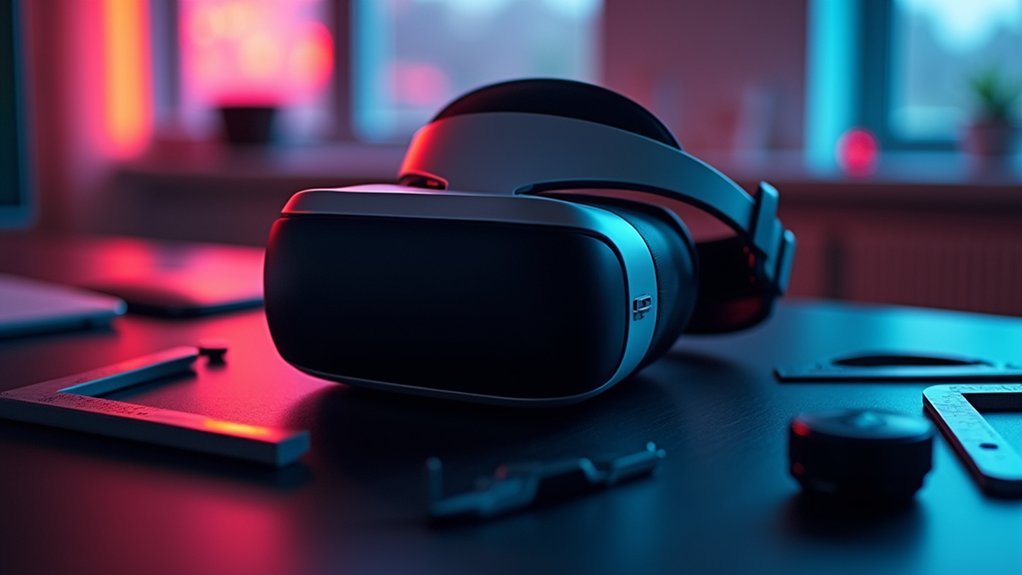
When developing VR headsets, you’ll need optical measurement systems that can accurately assess the complex visual parameters of near-eye displays. These systems utilize high-resolution imaging photometers and colorimeters to evaluate luminance, chromaticity, and other essential display characteristics.
You must guarantee your measurement setup emulates human pupil position and captures the complete FOV in a single image for consistent analysis.
Traditional 35mm lenses won’t work effectively due to size constraints and improper aperture positioning. Instead, you’ll require custom optical solutions specifically designed for near-eye displays.
These specialized systems enable precise light and color analysis while detecting defects in the display, including nonuniformity and dead pixels. Advanced measurement tools like the Radiant AR/VR Lens provide factory calibration and optimized performance for thorough VR headset evaluation.
Camera-Based Field of View Assessment Techniques
Although optical measurement systems provide precise technical analysis, camera-based FOV assessment techniques offer a more practical approach that directly mimics human visual perception. You’ll place markers on a camera positioned between your eyes to accurately measure your VR headset’s observable area. The measurement renders markers at 2 meters to determine angles of view, providing reliable horizontal and vertical FOV data.
| Measurement Method | FOV Result | User Impact |
|---|---|---|
| Marketing Claims | 110°+ | False Expectations |
| Per-Eye Measurement | 90-95° | Reduced Immersion |
| Camera-Based Center | 100-105° | Realistic Assessment |
These objective assessments reveal significant discrepancies between manufacturers’ claims and actual performance. You can validate your perceived FOV through Goldmann perimetry tests, ensuring camera-based measurements align with your visual experience for accurate field of view evaluation.
Photometric Imaging and Analysis Software Methods
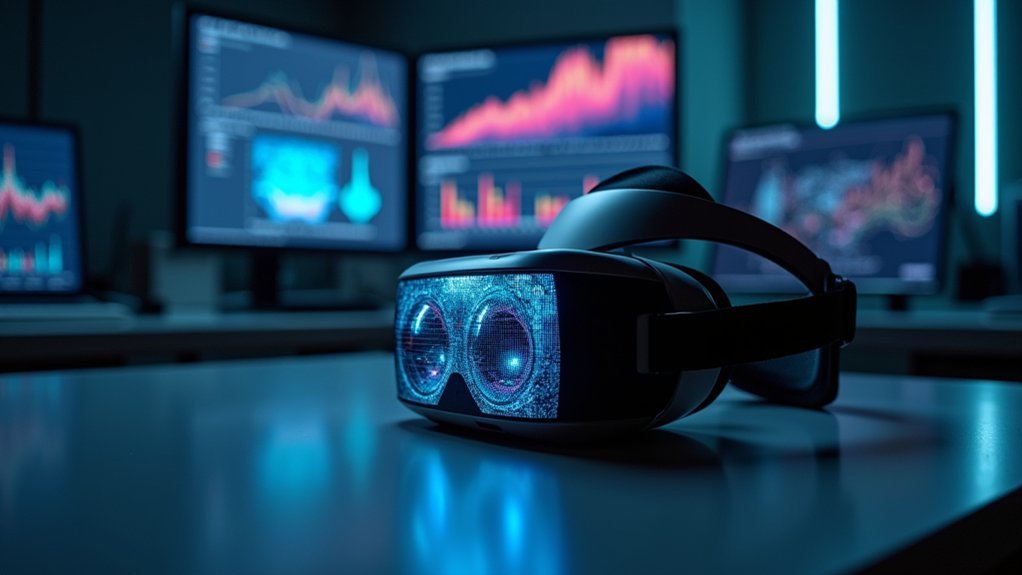
You’ll need specialized photometric imaging systems that capture precise luminance data across your VR display’s entire field of view.
These high-resolution systems measure how light intensity varies throughout different regions, revealing brightness inconsistencies that could affect your visual experience.
You can then use chromaticity analysis tools to evaluate color accuracy and uniformity, ensuring consistent color reproduction across all viewing angles within your headset.
Luminance Distribution Measurement
Since VR displays must deliver consistent visual quality across their entire field of view, photometric imaging systems provide the most extensive method for measuring luminance distribution.
You’ll capture complete FOV data using specialized cameras that evaluate luminance uniformity alongside chromaticity and contrast measurements. These measurement solutions replicate human pupil positioning to detect display defects that users would actually see during VR experiences.
Photometric imaging technology employs tristimulus filters that mimic human eye response, ensuring your measurements accurately reflect real viewing conditions.
You’ll also conduct modulation transfer function tests to assess image sharpness and clarity throughout the display area. This thorough approach identifies luminance variations, color shifts, and contrast inconsistencies that could compromise visual quality, giving you reliable data for maintaining ideal VR display performance across the entire field of view.
Chromaticity Analysis Tools
Three primary components define effective chromaticity analysis for VR displays: photometric imaging systems, specialized analysis software, and calibrated measurement protocols.
You’ll use photometric imaging to capture high-resolution luminance and chromaticity data from pixel-dense near-eye displays. This data assessment enables precise evaluation of color uniformity, contrast, and other critical visual characteristics.
Your analysis software should include specialized tests for AR/VR projections, performing defect analysis to identify issues affecting user experience. Advanced systems like Radiant TrueTest incorporate automated inspection capabilities specifically designed for VR applications.
Through accurate chromaticity analysis, you’ll detect color distortion and uniformity problems that compromise immersion. This guarantees accurate color reproduction across the visible spectrum, maintaining consistency essential for delivering high-quality immersive experiences in virtual reality environments.
Human Visual Perception Replication Approaches
You’ll need photometric imaging systems that accurately mimic human eye response to capture the essential data for VR field of view measurements.
These systems must simulate the exact pupil position to assess the complete display FOV as your eye would naturally perceive it.
Photometric Imaging Systems
Accuracy in VR field of view measurements depends on photometric imaging systems that replicate how your eyes actually perceive displays. These systems use high-resolution imaging photometers and colorimeters to evaluate pixel-dense displays with precision. You’ll need to emulate human eye position to capture the complete field of view and detect defects users would notice in near-eye displays.
| System Component | Function | Key Benefit |
|---|---|---|
| Imaging Photometer | Captures luminance data | Accurate light analysis |
| Colorimeter | Measures color uniformity | Precise color evaluation |
| Specialized Aperture | Mimics pupil dilation | Ideal lens performance |
| Factory Calibration | Guarantees measurement accuracy | Consistent results |
| Automated Visual Inspection | Analyzes display characteristics | Detects AR/VR projection defects |
Specialized software enhances these photometric imaging systems by analyzing various display characteristics and defects specific to AR/VR projections automatically.
Pupil Position Simulation
Since human eyes occupy specific positions within head-mounted displays, measurement systems must replicate these exact pupil locations to capture accurate field of view data.
You’ll need specialized equipment that mimics your visual perception to evaluate optical performance effectively in near-eye displays.
Custom optical solutions enable proper pupil position simulation by accessing displays at appropriate visual angles within head-mounted devices.
These systems use imaging photometers with tristimulus filters to replicate human eye response accurately.
- Position measurement devices exactly where your pupils would naturally sit
- Use high-resolution imaging photometers that simulate human visual characteristics
- Replace traditional 35mm lenses that block thorough field of view access
- Implement custom optical solutions for precise light capture positioning
- Guarantee consistent measurement angles that match natural viewing positions
This approach assures your measurement systems capture the complete display experience users actually see.
Crowdsourced Database and Tool-Based Measurements
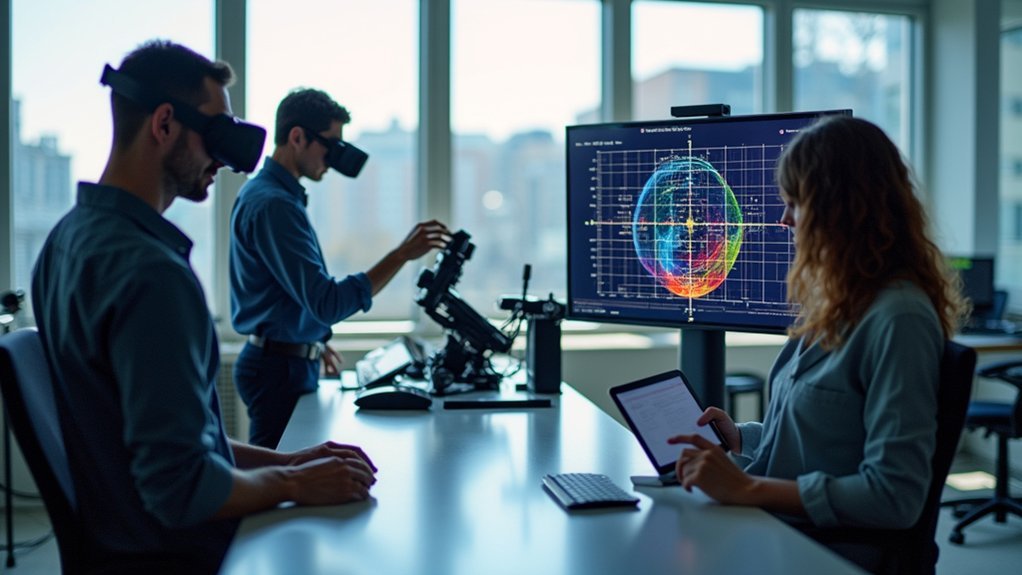
While traditional FOV measurements often rely on manufacturer specifications or individual testing setups, the VR Field of View Measurement Tool takes a different approach by harnessing crowdsourced data from the VR community.
This tool’s crowdsourced database contains 127 valid FOV measurements from 24 different VR headsets, providing thorough insights into actual FOV experiences across various devices.
The measurement methods involve attaching markers to cameras in Unreal Engine, with camera position strategically placed between the eyes for ideal accuracy.
This approach identifies outliers in headset performance, such as distorted vertical FOV in Pimax headsets.
Alternative FOV calculation techniques yield varying results, with center-of-head measurements typically producing higher angles than individual eye calculations.
Eye Position and Pupil Distance Calibration Methods
Beyond crowdsourced data collection, your individual eye characteristics play a fundamental role in determining the actual field of view you’ll experience in any VR headset.
Your interpupillary distance and eye position directly affect your perceived field of view. The calibration process requires objective measurements using super wide-angle cameras to capture accurate data. Misaligned IPD settings create discomfort and reduce your immersive experience greatly.
Proper calibration methods include:
- Using standardized tests like Goldmann perimetry for validation
- Measuring actual eye position with specialized cameras
- Adjusting IPD settings for ideal user experience
- Testing VR environments with validated measurements
- Optimizing headset design based on individual variations
Understanding these relationships helps manufacturers improve headset design while ensuring you get the most accurate field of view measurements possible.
Frequently Asked Questions
How Do You Measure Field of View?
You’ll measure field of view by positioning a camera between your eyes, capturing markers at set distances, then calculating visible angles either from your head’s center or each eye separately.
What Is the Field of View in VR?
You’ll experience a field of view ranging from 80 to 110 degrees in most VR headsets, which determines how much of the virtual world you can see without moving your head around.
What Is the Field of View of the Gear VR?
You’ll experience approximately 96 degrees of field of view with the Gear VR headset, though your actual viewing area can vary based on your head size and how you’ve positioned the device on your face.
How to Get High FOV in VR?
You’ll achieve higher FOV by adjusting your IPD settings, using mods or accessories, choosing headsets with traditional straps over halo designs, and selecting newer models with wider FOV capabilities like 140-degree prototypes.


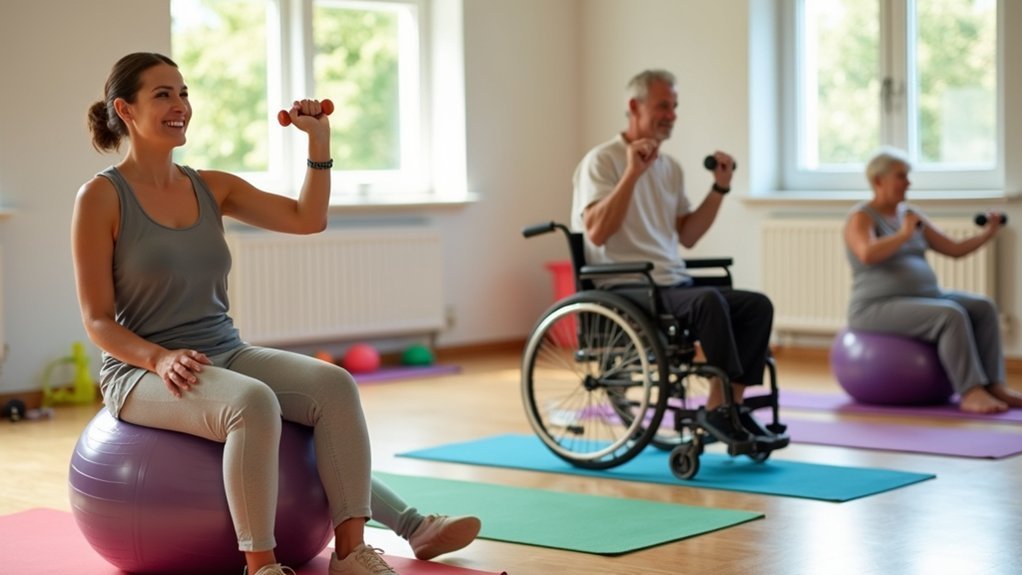
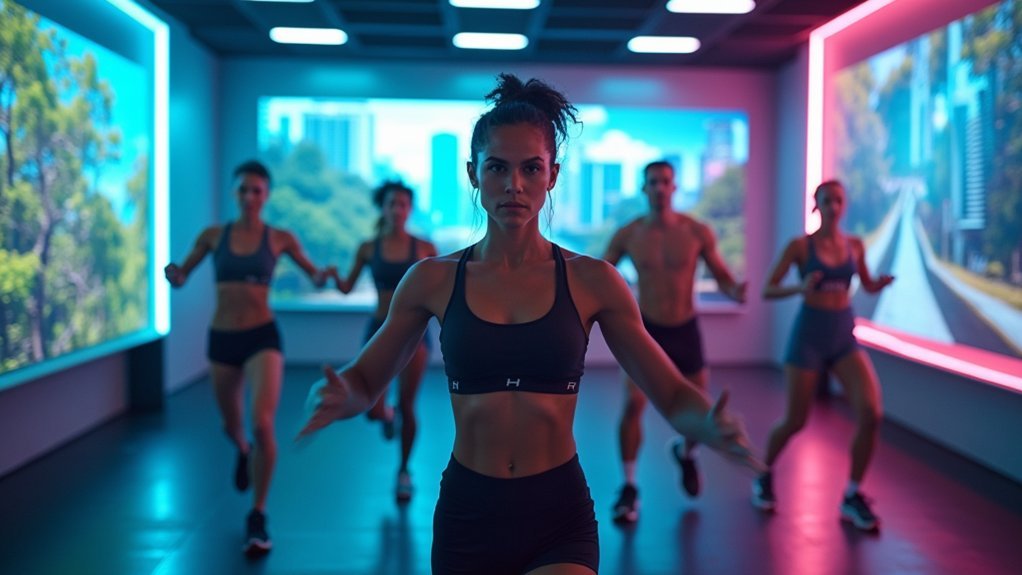

Leave a Reply